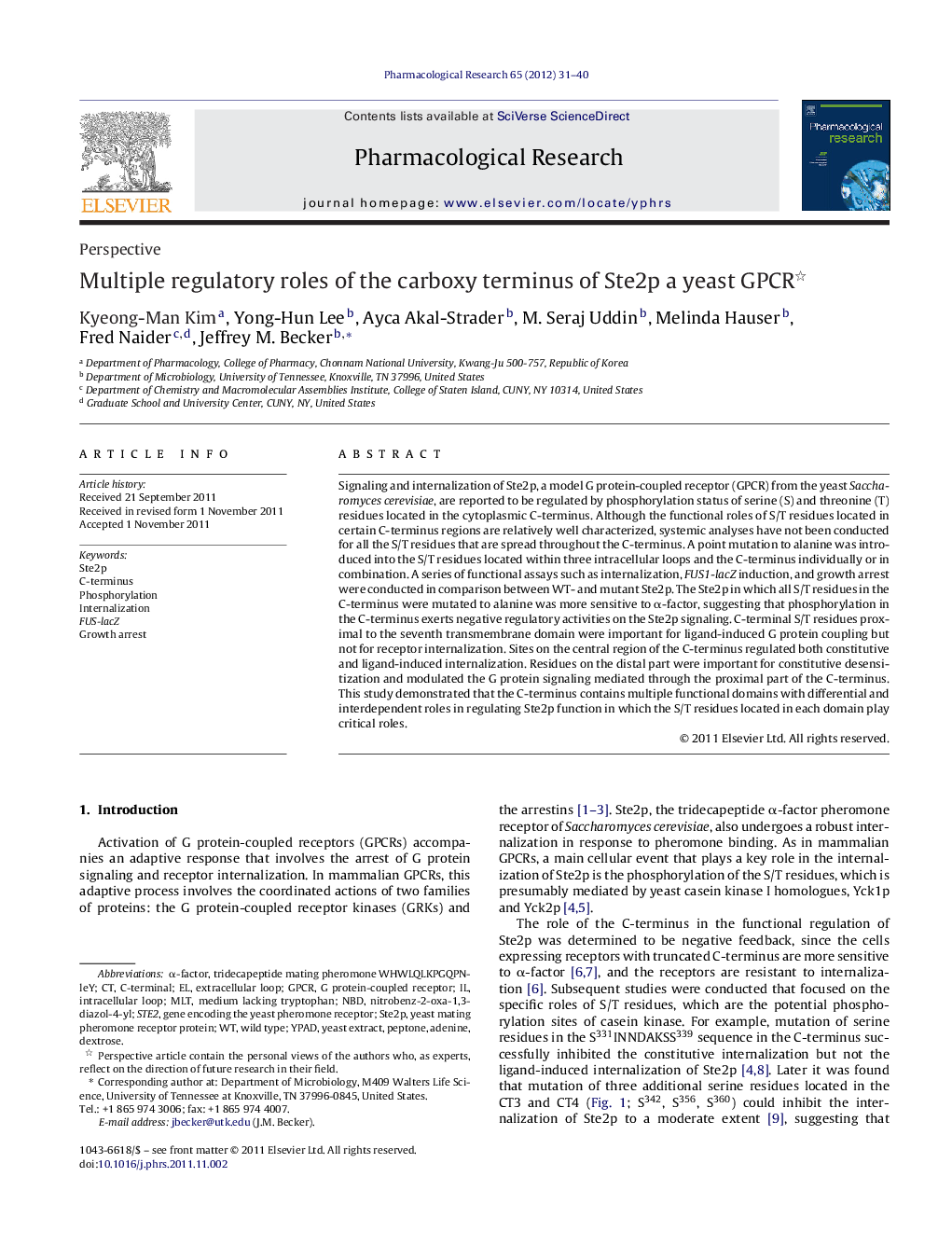| Article ID | Journal | Published Year | Pages | File Type |
|---|---|---|---|---|
| 2562322 | Pharmacological Research | 2012 | 10 Pages |
Signaling and internalization of Ste2p, a model G protein-coupled receptor (GPCR) from the yeast Saccharomyces cerevisiae, are reported to be regulated by phosphorylation status of serine (S) and threonine (T) residues located in the cytoplasmic C-terminus. Although the functional roles of S/T residues located in certain C-terminus regions are relatively well characterized, systemic analyses have not been conducted for all the S/T residues that are spread throughout the C-terminus. A point mutation to alanine was introduced into the S/T residues located within three intracellular loops and the C-terminus individually or in combination. A series of functional assays such as internalization, FUS1-lacZ induction, and growth arrest were conducted in comparison between WT- and mutant Ste2p. The Ste2p in which all S/T residues in the C-terminus were mutated to alanine was more sensitive to α-factor, suggesting that phosphorylation in the C-terminus exerts negative regulatory activities on the Ste2p signaling. C-terminal S/T residues proximal to the seventh transmembrane domain were important for ligand-induced G protein coupling but not for receptor internalization. Sites on the central region of the C-terminus regulated both constitutive and ligand-induced internalization. Residues on the distal part were important for constitutive desensitization and modulated the G protein signaling mediated through the proximal part of the C-terminus. This study demonstrated that the C-terminus contains multiple functional domains with differential and interdependent roles in regulating Ste2p function in which the S/T residues located in each domain play critical roles.
Graphical abstractFigure optionsDownload full-size imageDownload as PowerPoint slide
